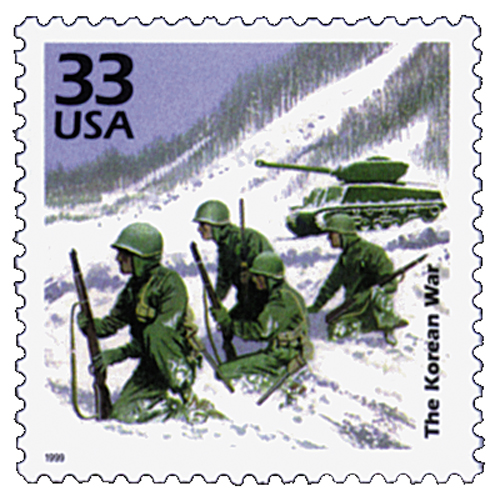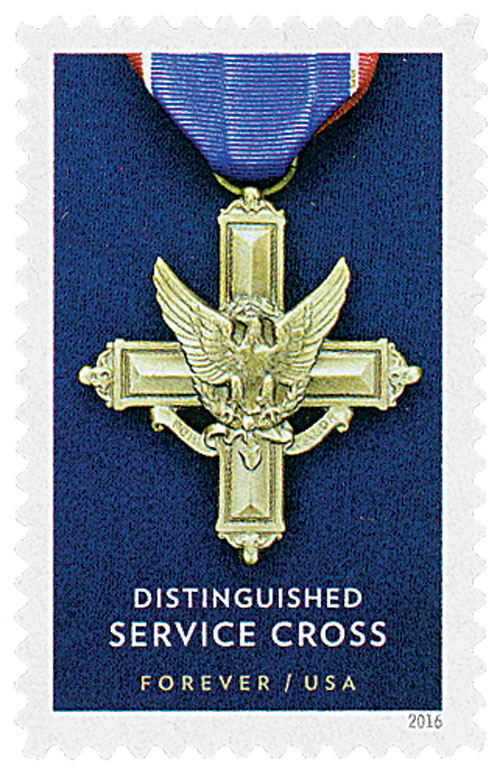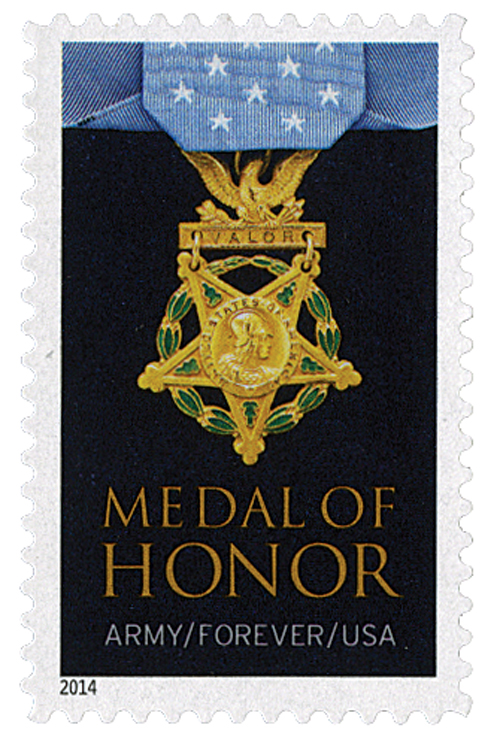U.S. #5065
2016 47c Distinguished Service Cross
At the outset of World War I, the only U.S. military award, aside from the Medal of Honor, was the Certificate of Merit Medal. Established in 1905, this medal had replaced ol
... more
U.S. #5065
2016 47c Distinguished Service Cross
At the outset of World War I, the only U.S. military award, aside from the Medal of Honor, was the Certificate of Merit Medal. Established in 1905, this medal had replaced older honors recognizing distinguished service in times of both war and peace. But short of the Medal of Honor, there was no distinct award for valor in the face of death during combat.
General John J. Pershing, commander in chief of the American Expeditionary Forces in France, felt the U.S. should have an honor for gallantry and risk-of-life in addition – and secondary to – the Medal of Honor. He proposed the idea to President Woodrow Wilson, and the Distinguished Service Cross was authorized in 1918. It was then awarded retroactively to 1917, and several even-older merit medals were upgraded.
Originally, the service cross was established to cover all people who acted on behalf of the U.S. military with extraordinary heroism in a combat situation. But over time, the other military branches created their own service cross medals. Today, second only to the Medal of Honor, there are now four service cross medals for the separate U.S. military branches: the Army’s Distinguished Service Cross, the Navy Cross, the Air Force Cross, and the Coast Guard Cross.
Value: 47c
Issued: May 30, 2016
First Day City: New York, NY
Type of Stamp: First Class Mail
Printed by: Banknote Corporation of America
Method: Offset, Microprint
Self-Adhesive
Quantity Printed: 20,400,000
The Distinguished Service Cross issue recognizes the second-highest Army award for military valor in combat. Richard Frasier's photograph of the medal was used by art director Greg Breeding to design the stamp.
Battle Of Chipyong-Ni Begins

On February 13, 1951, the Battle of Chipyong-ni, sometimes called the “high-water mark” of the Chinese fighting in Korea, began.
Chinese forces first entered Korea in November 1950. UN troops were uncertain of their intentions or capabilities and drew back to the 38th parallel. When it became obvious that the Chinese had overstretched their supply lines, General Matthew B. Ridgeway decided to make a stand at Chipyong-ni, a key road intersection.

The 23rd Infantry Regiment arrived in advance of the People’s Volunteer Army (PVA) and dug defenses, prepared artillery, and set up communications. Three battalions, including one from France, reinforced them. General Paul Freeman, Jr, was in command of 4,500 men.
The Chinese first set up around Chipyong-ni during the afternoon of February 13, 1951, but all their attacks were held off. As General Paul Freeman predicted, the Chinese launched their attack that night. Between 10 pm and 7:30 am, the Chinese led multiple attacks on several French and American positions.

Though some of these attacks forced the Americans to move back from their positions, they eventually regained their ground with a minimal loss of life. General Freeman was wounded in the leg during that first night of fighting. He refused to be evacuated and insisted on remaining in Chipyong-ni until the battle was over. He was later awarded the Distinguished Service Cross for his bravery and leadership there.

The Chinese called off their attacks on the morning of the 14th, as they knew the Air Force would soon be able to strike on them with ease. Fighting was minimal during the day but resumed again that night. The Americans were dangerously low on ammunition, so the Air Force began dropping it down along with flares, so the troops could find the much-needed supplies. The battle continued through the night and into the next afternoon. With the threat of Air Force napalm bombardment, the Chinese withdrew from battle. Chipyong-ni was a major morale booster for the Americans, who had previously seen the Chinese as unbeatable.
The Battle of Chipyong-ni proved to be a turning point in the war as the PVA began retreating north across the 38th Parallel. The battle has been called the “Gettysburg of the Korean War” and the high water mark of the Chinese involvement in the war.
Less 